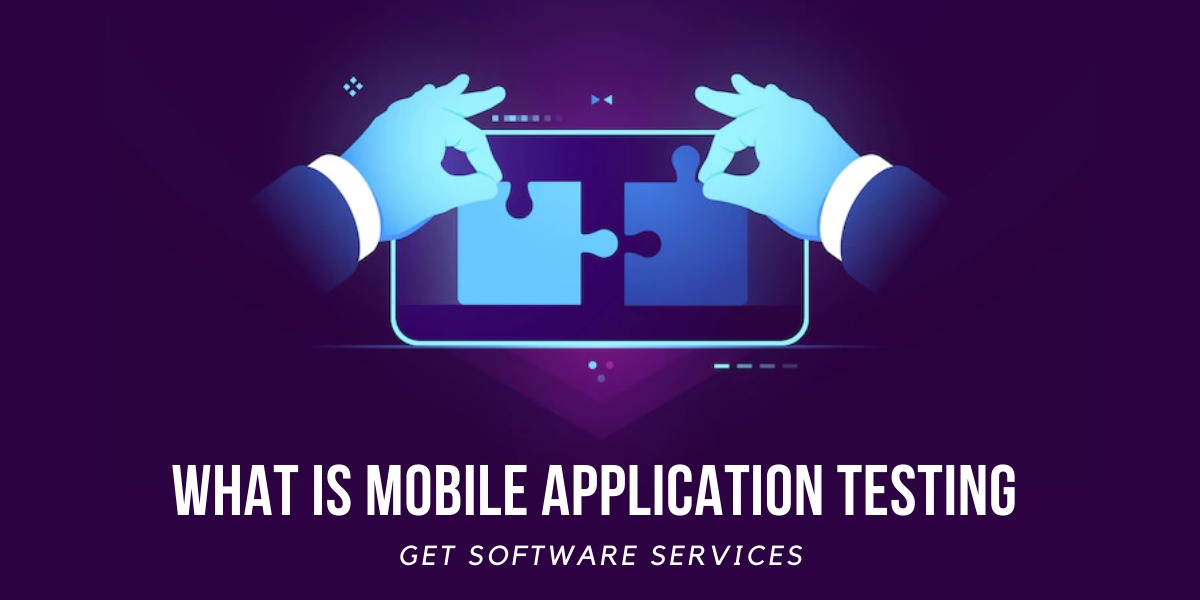
What is Mobile Application Testing?
Smartphone users are taking heed these days with more numbers crossing the limit. The Statista reports reveal that by 2023 the number of smartphone user’s numbers will escalate to 7.26 billion. However, the mobile app’s downloads have hit 258 billion in 2022. Aren’t the numbers impressive? The necessity for mobile apps in today’s hectic lifestyle keeps climbing.
Paying the electricity bill, booking a cab, submitting a report etc., mandate apps. With such importance for mobile apps, checking their scalability, user-friendliness, and error-free status is essential. Mobile application testing plays a crucial role in testing apps.
What is mobile application testing?
Mobile application testing is a set of procedures followed to test the functionality, quality, performance, usability, compatibility, and other app features. The testing considers a wide range of evaluation and application testing that uses mobile platform-centric and standard software testing procedures.
Types of mobile apps:
Mobile apps fall into three main categories as follows.
- Native apps: These mobile apps are built for only a single platform. The users cannot mix and match an iOS app for android and a Blackberry app for windows phones.
- Web apps: Web apps are accessed through a web browser on a mobile device and are a responsive version of websites. They work impeccably on any OS or mobile device as they work through mobile browsers.
- Hybrid apps: These apps blend web and native apps but consolidate themselves in a native app. It holds its icon or is usually downloaded from the play store.
Life cycle models of mobile apps:
The life cycle of mobile apps follows a sequence of steps as follows
- Planning and research
- Technical feasibility assessment
- Prototype and wireframe
- Designing the application
- Developing the mobile app
- Testing the app
- Deployment
- App launch
- App enhancement
Mobile application testing challenges:
It is an evident trend where mobile devices hold a significant part of every individual’s life. The first nine months of 2020 show mobile sales of 1590 million units and the trend keeps escalating. The growth of mobiles led to the splendid growth of mobile applications. With hassle-free mobile app development and varied user preference and mobile devices, challenges for testers and developers go high. Let us look into a few mobile application testing challenges.
- Various mobile applications: The surplus mobile applications are the only picture that comes to mind when discussing mobile apps. Apart from tapping and installing, these apps face several testing methods and challenges. There aren’t any standard solutions for mobile apps and hence based on the app type, the testing proceeds.
- Varying screen sizes: The screen trends have been enticing customers to go for more giant screens. Developing one application that stays consistent on all mobile screen sizes is essential, where testing the app leads to element organization and resizing issues.
- Browser matrix: It is a nightmare for mobile app testers and a challenging task as browsers are updated every fifteen days.
- Varying user requirements: The fluctuating user needs alter the SDLC and challenge the mobile app testers.
- Surplus testing tools: The mobile app testing is never complete with just a single tool and is not fruitful. The mobile app tester mandates proficiency and adaptive nature for testing.
Test planning and Design:
The mobile application testing undergoes a series of steps testing detailed below.
- Identify the testing scope: Knowing the testing scope, such as functions and attributes, is crucial. Moreover, mobile devices are filled with features and challenges testing. An investment of tools, skills, and environment is essential for every testing attribute.
- Identify Risks: Risks fall into functional, production metrics and physical capabilities.
- Determine coverage: The coverage goals mandatory for mobile app testing includes code, functions, risks, requirements, geography, connectivity, devices, and user perspectives.
- Test approach: An appropriate test approach is determined after coverage goals. The test approach takes into account industry context, people, environment, evaluation, scope, and methods.
- Test conditions and test scope: The test conditions are the primary parameters in any mobile app testing. With the unavailability of time for developing test cases in fast-paced assignments, detecting test conditions and conveying risk-based significances is essential. The above is considered a competent method for mobile app testing with a limited time edge.
- Regression: Regression testing supports mobile application testing as it detects the bugs and works to fix them. They guarantee that the formerly developed and tested software works perfectly even after changes.
Conclusion:
The market is over-flowing with mobile apps, and hence mobile application testing holds a special place as it delivers apps without fault. A scalable, user-friendly and high-quality app sits on all mobile phones only after passing through all the stages of testing. During the app development process, a proper testing strategy helps win a five-star app. Hence mobile application testing is an indispensable part of mobile development. Deliver error-free mobile apps by adopting mobile application testing.
GSS offers online training on mobile testing using appium. In our Appium training, we provide mobile automation testing tools along with Appium Certifications.



